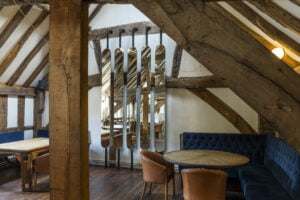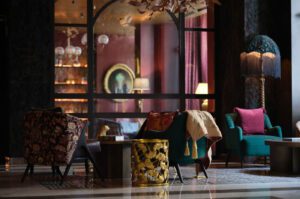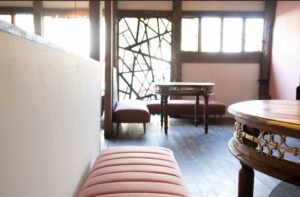Your brand is everything that is you.
From your logo to the colours you opt for, your website, social media presence, and even the type of chairs and lighting you use in your physical environment, everything, and we mean everything, builds your brand vision and value, shows who you are, and just what you have to offer.
This makes branding an extremely powerful tool.
It helps to build communities of like-minded people. People who value your business. Who choose you over your competitors, and who want to be and feel part of something bigger.
These communities, once built, can prove invaluable.
In a world of digital, people crave physical and social connections, and this is where interior branding supported by a robust brand strategy comes in.
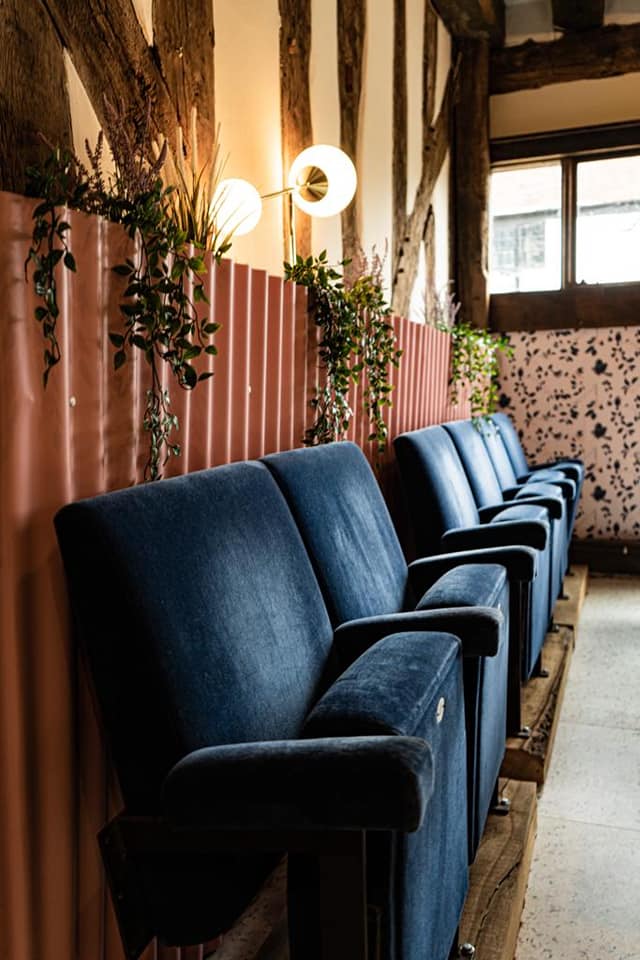

Effective branding triggers emotional reactions
“78% of millennials choose to spend their money on experiences over products.”
Your brand strategy should define how you want people to perceive you. What do you want your target audience to think, feel, and experience when they see your logo, brand name, or the inside of your restaurant or retail unit?
Every business and brand has a story to tell, and you need to bring your story to life and translate this into a visual language and tangible elements.
Interior branding helps to form a clear and consistent brand image if and only if you treat your physical space as part of your brand. One that must have the same cleverly crafted marketing principles applied, with the feeling of brand consistency from the moment someone walks into your venue and experiences the smells, the décor, and even the lighting, to the moment they sit down and pick up a menu.
By keeping the narrative the same and incorporating the design into even the tiniest of details, people can connect with your brand, triggering those emotional connections and the beginning of a community that others want to be part of.
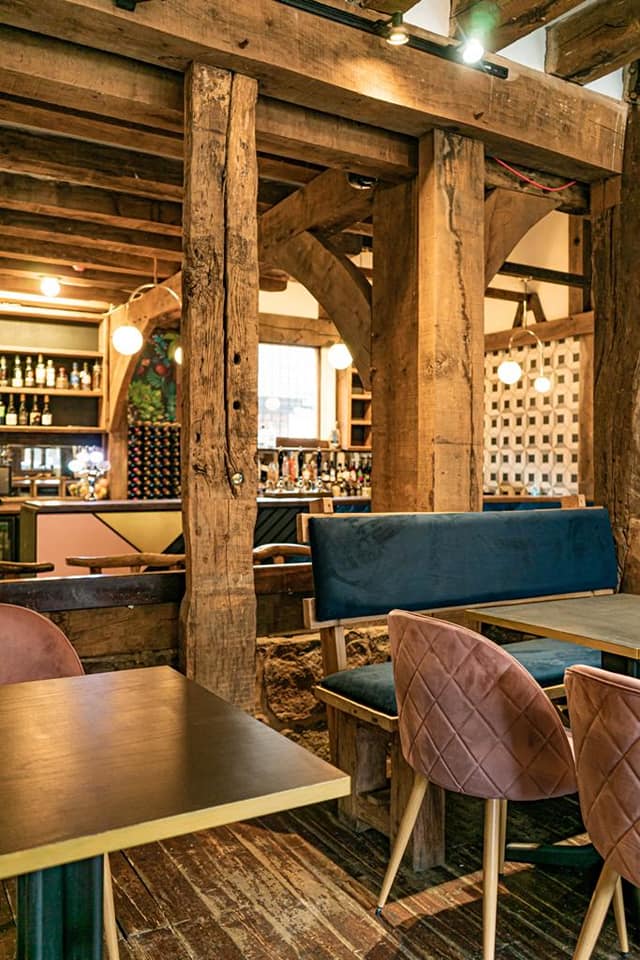

Benefits of a good brand strategy
Start at the beginning. When we work with a client we want to know the overall goals and aims of the space that we are creating. Is it just one part of the building or will there be further projects that we will need to roll-out. Once we’ve captured that information we can ensure that the objectives of the business are incorporated into any designs. As we begin the design process we go back to those original objectives to ensure that we are solving the problems and goals we identified. The design needs to look and feel great but also deliver on business goals.
Strengthens your company message. How your brand is communicated through the layout of your venue to the finishing materials you use, colours, furniture, and more all combine to inform your target audience of who you are, what you’re going to provide them, and what they should expect. Think of interior branding as the final link. It is your opportunity to create a unique customer experience.
Creates trust. People want to know they can trust brands and often choose brands because of how they make them feel. They base their decision on the experience you have created. In fact, we base 75% of our buying decisions on trust and emotion. The focus is on building long-term, lasting relationships. For example, would you trust a Starbucks that had strobe lighting, removed the comfy furniture, and replaced it with plastic, easy-to-clean stools, removed the wooden counters that show their commitment to the environment, and replaced these with stainless steel metal countertops?
Enforces consistency. Consistent brand messaging matters even before the purchase takes place. Especially as we know, people don’t like uncertainty; it makes us, as consumers, nervous. It is the predictability of your interior branding that creates trust. People will have certain expectations of your brand; does your interior design reflect this?
Creates value. Developing and adapting your brand strategy to meet customer and market demands allows you to build loyalty and drive sales and revenue growth, as the visual language that you use through exceptional interior design creates consistency and a business that sets you apart from your competitors.
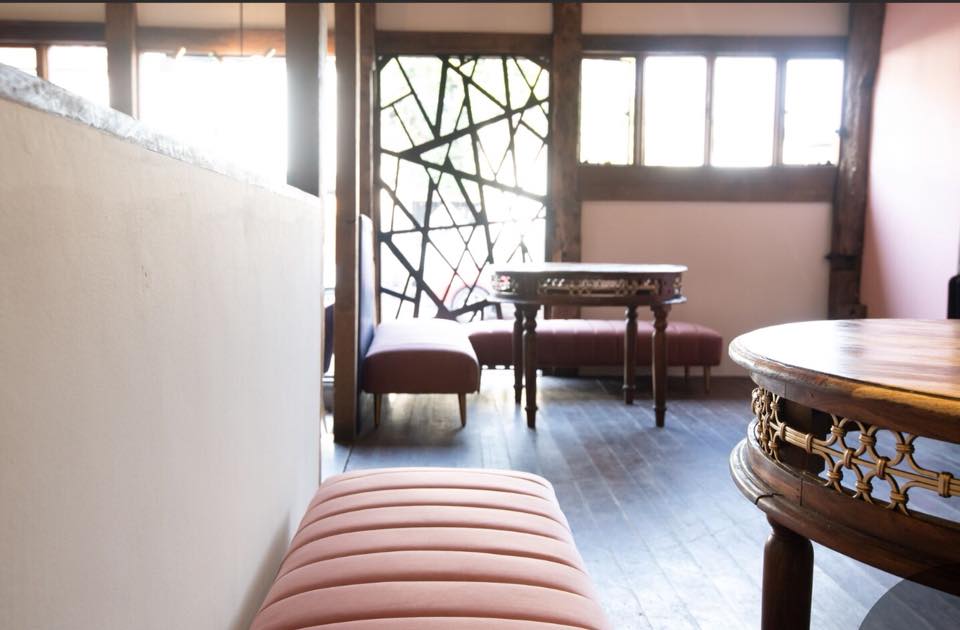

Telling your story through design
Define your brand values and mission, i.e., what your company cares about, and how you work to achieve this. From your values, you will then be able to create clear brand messaging that is consistent and relatable. For example, if you provide eco-friendly products, the interior of your store could reflect your brand values by using recycled materials and environmentally friendly lighting.
We like to think of branding as a conversation, i.e., listen to how people respond to what you’re doing because, trust us, the small things add up, with branding experienced at every touchpoint. Ensure to include all physical touchpoints and that these elements support each other. For example, think about the wording and styling of your menus, your cutlery, how dishes are served, and whether the cookware matches the venue’s interior. The narrative must flow seamlessly, and if one area, no matter how small, doesn’t fit or make sense, the connection with the brand can be instantly lost.
Strike a cleverly creative balance between imagery, aesthetics, and functionality. Injecting your personality into the space and make visits memorable. For example, your walls and ceilings allow you to showcase your brand, providing you with space to experiment with materials, textures, and colour.
Incorporate slatted panelling and natural wood to create a chic and stylish feel, giving earthy, authentic vibes. Or maybe look at possible links to local areas. Can you tie in, for example, the area’s background, the history, a story that sits alongside your brand that people can connect with and feel a sense of belonging? Creating a focal point that also offers the “wow” factor? (Make sure to check out our case study on Dhillon’s Brewery, where we achieved just this!)
Take people on a journey. Think about your brand colours and how these can flow from your online presence to your physical presence. How can you improve the functionality of your venue while still retaining core brand values and messaging?
Building your brand, building your community
Design plays a pivotal role in creating memorable experiences for hospitality guests. Beyond aesthetics, successful design in this realm goes beyond the visual realm and focuses on engaging all the senses, providing emotionally driven experiences that leave a lasting impact.
From the soothing touch of luxurious fabrics to the gentle aroma of carefully curated scents, every element is meticulously crafted to evoke a sense of comfort, tranquility, and delight. Captivating soundscapes and ambient lighting further enhance the atmosphere, transporting guests to a world where their emotions are stirred and their senses are enlivened.
By thoughtfully integrating sensory and emotionally driven design, we can create spaces that not only appeal to the eye but also touch the heart, ensuring that every guest’s stay is an immersive and unforgettable journey.
This means you must engage with and experiment with various design elements because interior branding is more than matching furniture with brand colours – it’s about creating spaces that speak for themselves.
Creating engaging and relevant experiences and placing you head and shoulders above the competition.
At Black Ivy Design we believe innovative storytelling comes through intelligent design.
